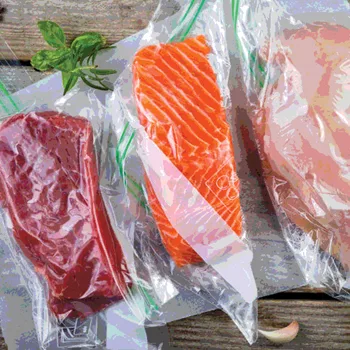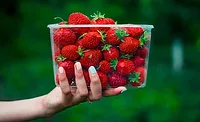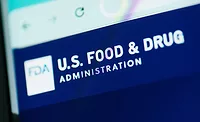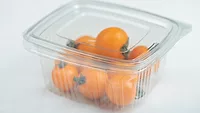Plastic Packaging in a Circular Economy

The European Union (EU) and others—including policy makers, companies, and organizations—have recently announced goals to reduce or eliminate the amount of plastic packaging sent to landfills. For example, Kraft Heinz announced in July 2018 that it aims to make 100 percent of its packaging globally recyclable, reusable, or compostable by 2025.
A few months earlier, the American Chemical Council’s Plastics Division announced targets of 100 percent of plastic packaging being recyclable or recoverable by 2030 and 100 percent of plastic packaging being reused, recycled, or recovered by 2040. As early as February 2016, the Plastics Trade Association launched the Zero Net Waste program, which recognizes plastics companies that take steps to reduce net waste in manufacturing. These goals fit in well with the drive toward the “circular economy” idea that is being pushed by the EU as a way of meeting the dual objective of minimizing waste and reducing the use of raw materials and energy.
The Goals of the Circular Economy and the Plastics Industry
By way of background, in 2015, the EU published an action plan for transitioning to a circular economy.[1] A significant development for those in the plastic packaging industry took place in January 2018, when the EU revealed its strategy on plastics as part of its transition toward a more circular economy. The “European Strategy for Plastics in a Circular Economy” (Plastics Strategy)[2] calls for all plastic packaging on the EU market to be either reusable or recyclable in a cost-effective manner by 2030. It also aims to reduce the consumption of single-use plastics and restrict the intentional use of microplastics.
The intent of the Plastics Strategy is to transform the way plastic products are designed, used, and recycled in the EU. To achieve these goals, the strategy calls for a more integrated supply chain, elimination of substances that hamper recycling, development of innovative materials and alternative feedstocks for plastic production, and improved collection and sorting of plastic waste.
In announcing the Plastics Strategy, the European Commission (EC) noted that plastic packaging accounts for about 60 percent of post-consumer plastic waste in the EU. Yet, demand for recycled plastics currently only accounts for about 6 percent of plastics demand in Europe due, in part, to low commodity prices and uncertainties about market outlets.
The EC identified four action steps needed to meet its goals for achieving a circular economy for plastics in the Plastics Strategy:
• Improve the economics and quality of plastics recycling
• Curb plastic waste and littering
• Drive innovation and investment toward circular solutions
• Harness global action
Good Intentions; Not so Good Follow-Through
The economics of plastics recycling can be a hindrance to recycling. Speaking at the EU’s Circular Economy Stakeholders Conference in February 2018, Olivier Francois, Group Galloo Recycling and European Recycling Industries’ Confederation, pointed out that while the price of recycled plastics is fully correlated with crude oil prices, the market fails to internalize recycling’s net environmental benefits in price setting. He called for incentives that take into account the environmental benefits of recycling.
With respect to the regulation of recycled plastic for food-contact applications in the EU, the EC published Regulation No. 282/2008 in March 2008. Under this regulation, only food-contact materials and articles that contain recycled plastic obtained from an authorized recycling process may be marketed in the EU after petitions for recycling processes received by December 31, 2009, are evaluated. Once a petition is received, the European Food Safety Authority (EFSA) issues an opinion on the safety of the process, then the EC either grants or refuses authorization of that recycling process. However, while EFSA has adopted more than 140 positive scientific opinions on the safety of plastic recycling processes for food-contact applications, the EC has authorized not one of the processes.
Several trade groups have urged the EC to authorize the processes. One of these groups, the Plastics Recyclers Europe (PRE), expressed concern in an October 2017 press release about the lack of authorizations for plastic recycling processes.[3] The vice president and chairman of PRE’s polyethylene terephthalate (PET) working group, Casper van den Dunger, said EU businesses were still in a “legislative no-man’s land” due to the years of delay, adding, “This uncertainty leads to decline in investments and more importantly to a possible mistrust in the legislation ruling food-contact materials.”
In the Plastics Strategy, the EC stated that it is committed to quickly finalizing the authorization procedures for over 100 safe recycling processes. The commission further stated that it will cooperate with EFSA to investigate safe use of recycled plastic materials other than PET or plastics originating from closed-loop-reuse applications.
In contrast to the EU, premarket clearance is not required for food-contact plastics produced by post-consumer recycling processes in the U.S. Rather, recycled plastic food-contact materials must meet the same regulatory requirements as virgin plastic materials. That is, they must meet specified compositional requirements, end-test extractive limitations in many instances, and general suitable purity requirements. The specific source controls used to ensure compositional compliance and processing steps to ensure suitably pure resin are the responsibility of the producer of the same, as is the case with a producer of virgin resins. Nonetheless, a producer of recycled materials may ask the U.S. Food and Drug Administration to review its recycling process and issue a no-objection letter on the suitability of its process for producing recycled plastic for use with food, and, in fact, many have pursued that path if for no other reason than to gain a market advantage by providing greater assurance to its customers as to the suitable nature of its product.[4]
The EC is hoping to issue about 140 authorization decisions on recycling processes in early 2019.
Recyclate Quality Is a Hindrance
The poor quality of recyclates (i.e., material intended to be recycled) is a major roadblock to increasing the amount of plastic food containers that is recycled. In May 2017, the European Plastics Converters Association (EuPC) launched a survey on the use of recycled plastic materials in Europe’s plastics-converting industry. The survey, which included 485 participants from 28 countries, found that the quality of plastic materials available for recycling is the biggest barrier to greater use of recyclates as raw materials. Almost 60 percent of the European plastics-converting companies find it hard to get a supply of recycled plastics materials that meet their quality standards, reported EuPC. In addition, almost 60 percent of the companies that took part in the survey stated that the current regulations are not suitable to support stronger use of recycled plastic materials in the future.[5]
The EC is aware of this concern. In Options to address the interface between chemical, product and waste legislation (Interface Document),[6] which was published at the same time as the Plastics Strategy, the commission acknowledged that the composition of waste streams is not fully predictable or constant, and added that in addition to the presence of substances of concern, there may be incidental contamination. This could include impurities in waste water, degradation products in the material, incomplete separation of materials between waste streams, or cross-contamination with other products.
In a presentation on the interface between chemicals, products, and waste at the Circular Economy Stakeholders Conference, Michael Mansuy from Veolia (an environmental services company) addressed this issue in part. He stressed that information about substances of very high concern under REACH (an EU regulation adopted purportedly to improve the protection of human health and the environment from the risks that can be posed by chemicals, while enhancing the competitiveness of the EU chemicals industry) should be made available to the whole value chain, including the waste stage, so that this factor can be taken into account with respect to recyclates.
In the Interface Document, the EC points out that limited information about substances of concern in waste leads to difficulties to complying with REACH. As an example, the commission explained that with respect to recycled plastics for food contact, “only recovered PET is currently suitable to be used in food contact materials provided that adequate decontamination processes are used, while other recovered plastics cannot be used because of a lack of information on the possible presence of contaminates.”
The EC plans to launch a feasibility study on the use of different information systems and other strategies that could enable relevant information to flow along the article supply chain to recyclers; it is expected to be ready by the end of 2019.
With respect to recycled plastics for food packaging, the Plastics Strategy recommends eliminating chemicals of concern and, where this is not possible, reducing their presence in addition to improving the ability to track such substances in both products and waste. The EC suggests that decontamination technology, or analytical and quality control approaches may be the only feasible way to guarantee that the supply of recycled materials is safe for specific end uses and will finance research and innovation projects on better identification of contaminants and on decontamination of plastic waste.
The EC officials in charge of this endeavor would be wise to look to their U.S. counterparts for assistance. For plastics other than PET, those intended for use in packaging must originate as food packaging materials to meet necessary compositional requirements. Challenge testing is then often used to judge whether the process used to clean the recyclates is sufficient to remove potential contaminants that may incidentally be present due to subsequent use of the containers with products other than food. If the recycle is not intended for use with food or other sensitive applications, then it makes little difference as to the composition of the recyclates and what contaminants may be present as the recycled material is probably headed for a park bench, decking material, and the like.
Additional actions that the EC plans on taking to improve the economics of plastics recycling are to work with the European Committee for Standardization (CEN) and industry to develop quality standards for sorted plastic waste and recycled plastics, and possibly implement economic incentives to reward the use of recycled content in the packaging sector.
Curbing Plastic Waste
The EC proposed a directive on single-use plastics in May 2018, which is intended to reduce plastic waste. The draft “Directive on the reduction of the impact of certain plastic products on the environment”[7] includes a ban on certain single-use plastics, along with collection goals for plastic packaging, extended producer responsibility schemes, and design requirements for beverage containers. More specifically, the proposal would require member states (MS) to take measures to significantly reduce the consumption of plastic beverage cups and food containers. They would also be required to ban certain single-use plastic products, including cutlery, plates, straws not intended for medical purposes, and beverage stirrers.
Furthermore, the draft directive would establish a deadline of 2025 for MS to achieve an annual 90 percent separate collection rate by weight for single-use plastic beverage bottles in a given year. MS would also be required to take measures to raise awareness of the impact of littering and inappropriate disposal of waste on the environment. Just recently, the European Parliament (EP) approved a report on the draft directive[8] that was prepared by its Committee on the Environment, Public Health and Food Safety. The next step is for the EC to vote on the amendments approved by the EP; then EP can start negotiations with Member States.
In a response to the draft proposal on single-use plastics, the European Organization for Packaging and the Environment offered recommendations to ensure that the EC’s proposal meets its intended objective.[9] Concerning the substitution of single-use plastics with alternative materials, the group cautioned that “a net environmental improvement must be considered on a case-by-case basis, taking into account the full life-cycle of the individual product and supply chain, including all relevant end-of-life aspects.”
Innovation and Investment
Noting that more than 80 percent of the environmental impact of a product is determined at the design stage, the EC said circularity will require making better and sustainable decisions at this stage. In particular, the EC would like to see innovative solutions for advanced sorting, chemical recycling, and improved polymer design. Product designers will need to work with recycling engineers to develop materials that maintain their original material properties throughout recycling and are safe and sustainable throughout their life cycle and allow unwanted substances to be extracted.
The EC specifically mentioned the need for innovation in developing materials that fully biodegrade in seawater and freshwater, and are harmless for the environment and ecosystems. The Plastics Strategy pointed out that alternative types of feedstock—such as bio-based plastics (made from starch or fiber) or plastics produced from carbon dioxide or methane—that offer the same functionalities as traditional plastics, but with potentially lower environmental impacts, are being developed.
Currently, plastics made from these types of feedstock constitute only a very small share of the market. This is due, in part, to the high cost of bio-based feedstocks. The commission warned that it is important to ensure that these feedstocks result in genuine environmental benefits compared with nonrenewable alternatives and said that it plans to propose harmonized rules for defining and labeling compostable and biodegradable plastics, and will develop life-cycle assessments for these materials. CEN developed a standard, EN 13432, in 2000 that specifies requirements for packaging recoverable through composting and biodegradation.
In the U.S., the Federal Trade Commission issued updated Guides for the Use of Environmental Marketing Claims (Green Guides) in 2012. The guides stated that a material can be called “compostable” only if it breaks down in a “timely manner.” The guides also indicate that it is deceptive to make an unqualified degradability claim for items destined for landfills, incinerators, or recycling facilities. Furthermore, unqualified degradable claims should be based on reliable scientific evidence that the item will completely break down within 1 year of entering the solid-waste stream. The Green Guides do not address bio-based claims.
State laws can also impact what environmental claims are allowed on packaging. For example, California requires that any plastic products labeled as “compostable,” “home compostable,” or “marine degradable” must comply with one of several specified standards. One of these standards is D6400, which was developed by the American Society for Testing and Materials (ASTM). D6400 applies to plastics and products made from plastics that are designed to be composted under aerobic conditions in municipal and industrial aerobic composting facilities, where thermophilic conditions are achieved.
Another type of biodegradable plastic is oxo-biodegradable plastic, which is made from polymers and additives that hasten degradation of the polymers upon exposure to different conditions, such as UV light and/or heat, and oxygen. An applicable standard for oxo-biodegradable plastic is ASTM D6954, which provides a framework to compare and rank “the controlled laboratory rates of degradation and degree of physical property losses of polymers by thermal and photooxidation processes as well as the biodegradation and ecological impacts in defined applications and disposal environments after degradation.”
The EC has expressed concern that some supposedly biodegradable materials do not have any proven environmental advantage over conventional plastics. In a January 2018 “Report on oxo-degradable plastic,”[10] the EC concluded that “there is no conclusive evidence on a number of important issues relating to beneficial effects of oxo-degradable plastic on the environment.” Consequently, the commission plans to restrict the use of oxo-plastics in the EU.
Shortly after the EC published its report on oxo-degradable plastics, the Oxo-Biodegradable Plastics Association (OPA) published a response challenging its findings.[11] OPA stated that there is a “fundamental difference” between older “oxo-degradable” and “oxo-biodegradable” plastics (OBP), adding that these plastics “have been designed to convert at the end of their useful life into biodegradable materials and to biodegrade under any conditions in the open environment with a very much shorter timescale.” The organization also criticized the regulatory authorities in Europe for not having developed an EU standard for oxo-biodegradable plastics. Not all jurisdictions have the same concerns about OBP. Some governments in the Middle East, Africa, and Asia have made OBP mandatory, points out OPA.
Global Action
The EU Plastics Strategy mentioned China’s decision to ban the import of certain types of plastic waste as of January 2018. In announcing the ban, China cited the poor quality of much of the plastic waste that it received from other countries, in addition to stating that it wanted to focus on its own waste. Prior to the ban, more than 85 percent of the EU’s exported plastic waste was shipped to China. Much of EU’s post-consumer plastic packaging waste is now being shipped to other Asian countries.
The EC cautioned that while plastics value chains are developed across entire continents and plastic waste is traded internationally, uncertainty remains over its treatment in some countries. “Adequate plastic waste prevention, collection, and recycling systems are needed in many parts of the world,” the EC wrote in the Plastics Strategy.
The EC agreed to promote the development of international standards to boost industry confidence in the quality of recyclable and recycled plastics. “It will also be important to ensure that any plastics sent abroad for recycling are handled and processed under conditions similar to those applicable in the EU under rules on waste shipment,” the commission added.
A step toward global standardization was recently undertaken by the Association of Plastics Recyclers and Plastics Recycling Europe when they jointly developed a global definition for the term “recyclable” as it relates to plastic packaging and products.[12]
The proposed definition establishes four conditions that a plastic product must meet to be considered recyclable. These are the following:
1. It must be made with a plastic that is collected for recycling, has market value, and/or is supported by a legislatively mandated program;
2. It must be sorted and aggregated into defined streams for recycling processes;
3. It can be processed and reclaimed/recycled with commercial recycling processes; and
4. The recycled plastic becomes a raw material that is used in the production of new products.
The trade groups emphasized that a global definition of recyclability “is an integral step to harmonize the worldwide plastics recycling industry.”
Conclusion
Meeting the goals aimed at making plastic packaging part of a circular economy will not be easy. In discussing his company’s sustainable packaging goals, Kraft Heinz CEO Bernardo Hees stated, “Our collective industry has a massive challenge ahead of us with respect to packaging recyclability, end-of-life recovery, and single-use plastics.” He added that Kraft Heinz will partner with packaging experts, organizations, and coalitions to explore technical, end-of-life, and infrastructure solutions, and is already collaborating with Environmental Packaging International for consulting, tracking, and other specialist services in the packaging space.
The EC also acknowledges the challenges of making plastic packaging part of a circular economy but added that the challenges linked to the production, consumption, and end-of-life of plastics may be turned into an opportunity as well.
George G. Misko, Esq., is a partner in the Washington, DC, office of Keller and Heckman LLP. He can be reached at misko@khlaw.com.
Since this article went to print, the EC published on January 18, 2019, an amended draft of the reduction of certain plastic products Directive (available at: https://data.consilium.europa.eu/doc/document/ST-5483-2019-INIT/en/pdf). Among the changes in the amended draft is the deadline for MS to achieve an annual 90% separate collection rate by weight for single-use plastic beverage bottles has been extended from 2025 to 2029.
References
1. eur-lex.europa.eu/legal-content/EN/TXT/?uri=CELEX:52015DC0614.
2. ec.europa.eu/environment/circular-economy/pdf/plastics-strategy.pdf.
3. www.plasteurope.com/news/PLASTICS_RECYCLING_EUROPE_t238090/.
4. www.fda.gov/Food/GuidanceRegulation/GuidanceDocumentsRegulatoryInformation/ucm120762.htm.
5. www.plasticsconverters.eu/single-post/2017/10/25/EuPC-publishes-results-of-its-survey-on-the-use-of-recycled-plastics-materials.
6. ec.europa.eu/docsroom/documents/27321.
7. ec.europa.eu/environment/circular-economy/pdf/single-use_plastics_proposal.pdf.
8. www.europarl.europa.eu/sides/getDoc.do?type=REPORT&reference=A8-2018-0317&language=EN.
9. europen-packaging.eu/component/content/article/1112.html.
10. eur-lex.europa.eu/legal-content/EN/TXT/?qid=1516266600827&uri=COM:2018:35:FIN.
11. www.biodeg.org/OPA%20responds%20to%20European%20Commission%20%20-%20%20%2019%20January%202018.pdf.
12. plasticsrecycling.org/news-and-media/824-july-12-2018-apr-press-release.
Looking for quick answers on food safety topics?
Try Ask FSM, our new smart AI search tool.
Ask FSM →









